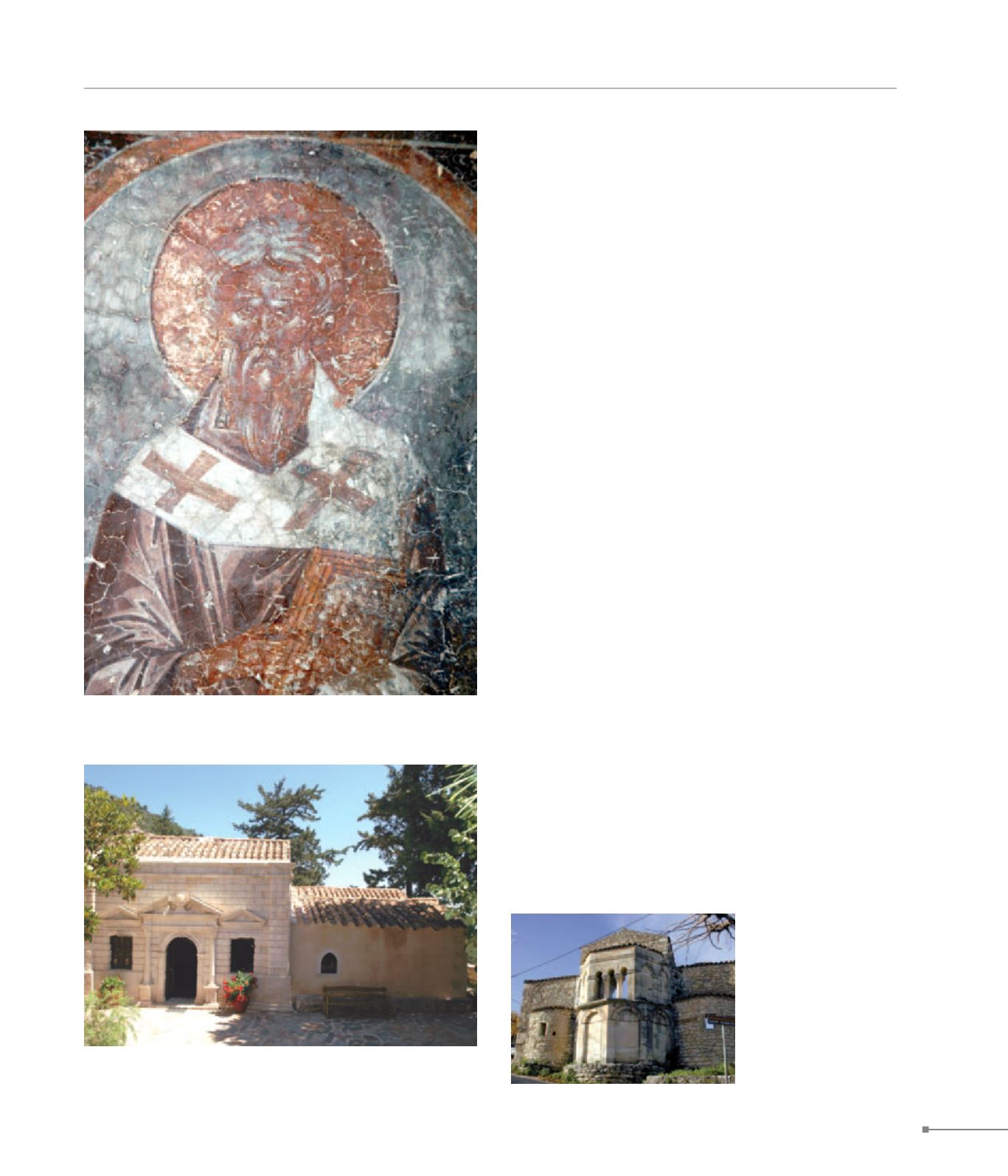
Bali Monastery.
Episkopi.
CRETE
267
418. Bali monastery, catholicon (Μονή Μπαλή, καθολικό)
418. Bali monastery, catholicon, wall painting (Μονή Μπαλή, καθολικο,
τοιχογραφία)
418.
Bali Monastery.
Most of the Timios Prodromos monastery was built in the pe-
riod of Late Venetian rule on a slope of Mount Tallaion. Due
to the ground formation the catholicon is on a different level
and the remaining structures of the monastery are to its S. It
was originally constructed and decorated in the early 15th c.
and the S aisle was added later. As elsewhere, the two aisles
expanded to the W and the elaborate S façade of carved, po-
rous stone was constructed, incorporating strong Mannerist
features. In the monastery refectory survives the unique in
Crete, wall-painted decoration of the 17th c., a time when the
art of wall-painting gave way to portable icons.
419.
Vosakou Monastery.
On a remote plateau on Mount Tallaion is the monastery of the
Holy Cross, built from the late 17th to the 19th c. During recent
renovation works fragments of high-quality wall-paintings from
the mid-14th c. have been found near the later catholicon.
420.
Episkopi.
The town was named after the see of Mylopotamos (also
called Aulopotamos), which was transferred there after the
liberation of Crete from the Arabs. Episkopi was ceded to the
Latin church and in the period of Late Venetian rule the bish-
op’s palace was built on the S side of the town. The church
was built in the Mid-Byzantine period, possibly on the site of
an Early Christian basilica. From the original survives part of
its SW section. The church was extensively reconstructed in
the late 13th c. following the same architectural type as the
original: cross-in-square with dome. The frescoes date from
the early 14th c.
420. Episkopi, Saint John
(Επισκοπή, Άγιος Ιωάννης)


